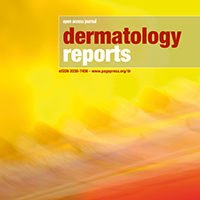Factors associated with the severity of pruritus in patients with terminal chronic kidney disease undergoing hemodialysis in Lima, Peru
 Smart Citations
Smart CitationsSee how this article has been cited at scite.ai
scite shows how a scientific paper has been cited by providing the context of the citation, a classification describing whether it supports, mentions, or contrasts the cited claim, and a label indicating in which section the citation was made.
The objective of the study is to analyze the factors associated with the severity of pruritus in patients with terminal chronic kidney disease undergoing hemodialysis. The methodology used is based on a cross-sectional study in patients receiving hemodialysis at the Centro Nacional de Salud Renal. Severe pruritus was defined as a score on the visual analogue scale greater than or equal to 7, and the strength of association with the possible risk factors was assessed by calculating prevalence ratios. Regarding the results, 264 patients were included, 59.9% were male, with a mean time on hemodialysis of 10.26 ± 7.14 years. 75% experienced pruritus, of this group, 1 in 3 presented severe pruritus. Hyperphosphatemia and the use of antihistamines were associated with a higher prevalence of severe pruritus (RP 1.71, 95% CI 1.09-267 and RP 2.39, 95% CI 1.51-3.75, respectively). The positive serology for Hepatitis C Virus was described as a protective factor for presenting severe pruritus (RP 0.55, 95% CI 0.33 - 0.89). In conclusion, severe uremic pruritus is a frequent problem in patients with chronic terminal kidney disease who have hyperphosphatemia and treatment with antihistamines independently of the time they have been on hemodialysis.





 https://doi.org/10.4081/dr.2019.8310
https://doi.org/10.4081/dr.2019.8310




